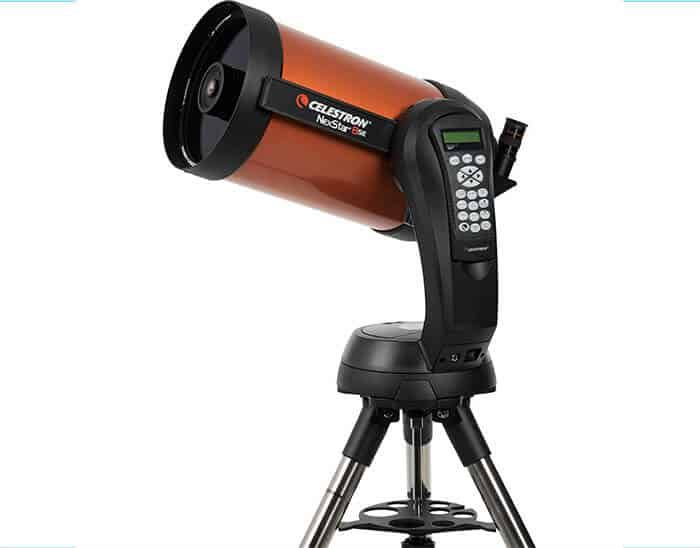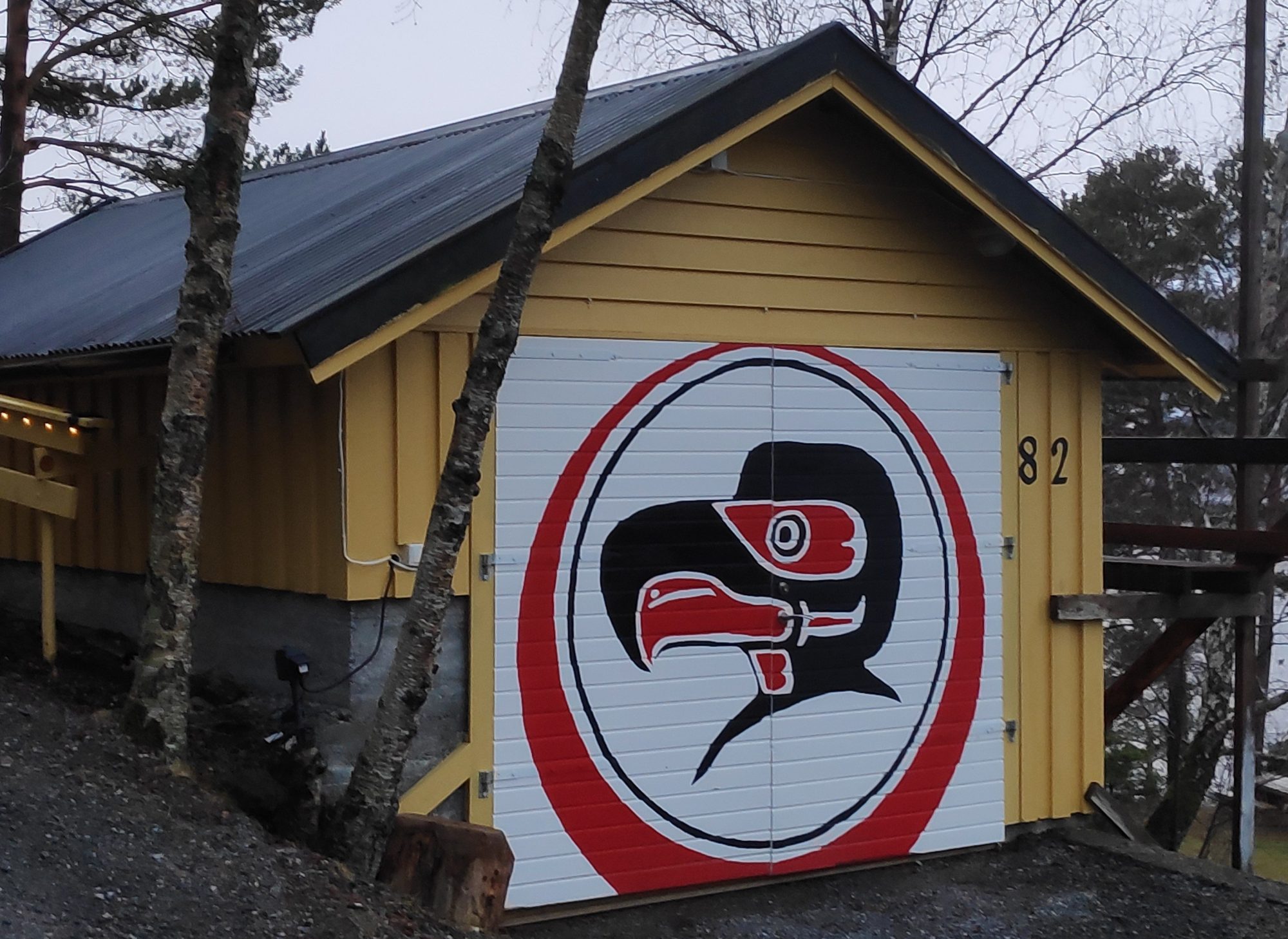
This weblog post is the eighth of a series about optics and optical equipment. Optics 8 is about astronomical telescopes. Optics 9 is about microscopes. Later in 2025, two additional posts will appear: #10 is about digital cameras; #11 is about digital photograph collections.
Scandinavian winters are long and dark. Every year, in January, I go through a period where I considered acquiring a telescope. So far, I have not done so. In large part, it has to do with the reality of cloud cover. Norway is one of the most extreme places in the world for cloud cover. That said, Trøndelag is better than most places in Norway.
There has only been one type of telescope I have ever consider buying: a Celestron 8.
Before discussing it, and other telescopes suitable for amateurs, there is the history of astronomy to endure.
Johannes Kepler (1571–1630) investigated some of the laws of optics in his lunar essay (1600). In 1603, Kepler focused on optical theory, published as Astronomiae Pars Optica = The Optical Part of Astronomy (1604). It described the inverse-square law governing the intensity of light, reflection by flat and curved mirrors, principles of pinhole cameras, the astronomical implications of optics such as parallax and the apparent sizes of heavenly bodies. This work provides a foundation for modern optics, despite the absence of anything about refraction.
In physics, refraction is the change in direction of a wave passing from one medium to another or from a gradual change in the medium. Refraction of light is the most commonly observed phenomenon, but other waves such as sound waves and water waves also experience refraction.
Willebrord Snellius (1580–1626) developed the mathematical law of refraction = Snell’s law, in 1621. René Descartes (1596–1650) used geometric construction and the law of refraction = Descartes’ law, to show that the angular radius of a rainbow is 42°. He developed the law of reflection, Dioptrique (1637, French) = Optics = Dioptrics (both English) a short treatise that was the first published to mention this law.
Christiaan Huygens (1629–1695) wrote several works about optics. These included Opera reliqua and Traité de la Lumière (1690) which presents a wave theory of light. This theory was initially rejected in favour of Newton’s corpuscular theory of light, until Augustin-Jean Fresnel (1788 – 1827) adapted Huygens’s principle to give a complete explanation of the rectilinear propagation and diffraction effects of light in 1821. This principle is now known as the Huygens–Fresnel principle.
Isaac Newton (1643–1727) investigated the refraction of light, demonstrating that a prism could decompose white light into a spectrum of colours, and that a lens and a second prism could recompose the multicoloured spectrum into white light. He also showed that the coloured light does not change its properties by separating out a coloured beam and shining it on various objects. Newton noted that regardless of whether it was reflected or scattered or transmitted, it stayed the same colour. Thus, he observed that colour is the result of objects interacting with already-coloured light rather than objects generating the colour themselves. This is known as Newton’s theory of colour. From this work he concluded that any refracting telescope would suffer from the dispersion of light into colours, and invented a reflecting telescope (today known as a Newtonian telescope) to bypass that problem. By grinding his own mirrors, using Newton’s rings to judge the quality of the optics for his telescopes, he was able to produce a superior instrument to the refracting telescope, due primarily to the wider diameter of the mirror.
In 1671 the Royal Society asked for a demonstration of his reflecting telescope. Their interest encouraged him to publish his notes On Colour, which he later expanded into Opticks. Newton argued that light is composed of particles or corpuscles and were refracted by accelerating toward the denser medium, but he had to associate them with waves to explain the diffraction of light (Opticks Bk. II, Props. XII-L). Later physicists instead favoured a purely wavelike explanation of light to account for diffraction. Today’s quantum mechanics, photons and the idea of wave-particle duality bear only a minor resemblance to Newton’s understanding of light.
In his Hypothesis of Light (1675), Newton posited the existence of the ether to transmit forces between particles. In 1704, Newton published Opticks, in which he expounded his corpuscular theory of light. He considered light to be made up of extremely subtle corpuscles, that ordinary matter was made of grosser corpuscles and speculated that through a kind of alchemical transmutation “Are not gross Bodies and Light convertible into one another, …and may not Bodies receive much of their Activity from the Particles of Light which enter their Composition?”
A Telescope
Selecting the right equipment is vital in amateur astronomy. Optical quality is the most important characteristic of any telescope because it contributes significantly to the clarity of celestial bodies.
The three most commonly used types of telescopes:
1. Refractors: These use glass lenses at the front of the tube, a design often favoured for planetary observations.
2. Reflectors: These use mirrors instead of lenses. These are preferred for observing deep sky objects such as faint galaxies and nebulae.
3. Compound/ catadioptric: These combine lenses and mirrors. They are versatile, and can be used for viewing a variety of celestial objects.
The Tracking Platform
A telescope tracking platform can be built to allow a telescope to move in sync with the rotation of the Earth: to track stars, planets and other celestial objects as they move across the sky. While mechanical components provided timing, increasingly computers provide this today. Part of my interest in tracking involves the Forth programming language.
Everything in the night sky is in constant motion. This is mainly due to Earth’s rotation. Without a tracking system, a telescope, regardless of its quality, will only provide fleeting views. Tracking systems help a telescope to consistently follow celestial bodies, by moving the telescope at a similar rate and direction, mimicking the sky’s movement. This is especially important for astrophotography, that could require long exposure times.
Building a telescope tracking platform requires diligence, patience and persistence. Platforms can be complex and require fine-tuning and troubleshooting. Telescope tracking platforms come in two basic types:
Alt-Az Mounts: They move up-and-down (altitude) and side-to-side (azimuth). These mounts are often easy to use, making them suitable for beginners, for general observation and short-term tracking. They are not suitable for long-term tracking or astrophotography.
Equatorial Mounts: These mounts rotate along an axis parallel to Earth’s rotation. They require alignment with the Polaris = North Star. Equatorial mounts offer superior tracking for longer periods and are needed for astrophotography.
A mount alone doesn’t make a perfect tracking system. Location, local climate, the telescope’s size and weight have to be taken into consideration, along with motor drives and functionality.
Designing a telescope tracking platform is dependent on location. This impacts the effectiveness of a tracking system. A northern hemisphere, polar alignment will be different from that in the southern hemisphere. The altitude and azimuth of the celestial pole vary with latitude and longitude.
Humidity and temperature influence the telescope’s operation. In extreme cold, the lubricants in the mounts may thicken, hampering smooth movements. High humidity can lead to rusting of the metal parts.
The size and weight of a telescope also affect mount choices. Heavier telescopes require sturdier mounts to support their weight.
Maximum weight capacity varies with the mount. A typical amateur alt-azimuth mount can have a mass of 20 kg, while for an equatorial mount this can be 50 kg. While a a casual stargazer, can co-exist with an alt-azimuth mount for general observation, someone actively engaged in astrophotography, will need an equatorial mount, because of its superior tracking capabilities.
While tracking mount components are widely available online, it is sensible to acquire all the necessary materials before starting to build a telescope tracking platform. This prevents surprises and unnecessary delays. The functionality of the platform directly depends on component quality.
Some crucial components include the mount. Metal bars are needed for the base and rocker. Here, durability is important, so consider stainless steel or aluminum. Quality ball bearings used in the pivot point, will ensure smooth rotation of the platform. Motor and Gears should be selected to enable auto-tracking, with an adjustable motor speed capable of matching the Earth’s rotation.
Minimum tool requirements, include a screwdriver set, drill, hacksaw, wrenches and a level.
Before building the telescope tracking platform create a detailed design on paper or using design software. This design should show the mount, metal bars, ball bearings, motor and gears.
Start assembling the components beginning with the mount. Because it forms the core support system for the tracking platform, it must be sturdy and well-balanced. Affix the metal bars to provide a frame that can withstand your telescope’s weight, ensuring better stability and tracking accuracy. Place ball bearings in strategic locations to allow smooth rotation of the platform. Connect gears appropriately to the motor, to ensure their rotation is synchronized with the tracking process.
Integrate a controller into the platform to governs the motor speed and direction. Most modern controllers come with a capability to store star maps and tracking speed presets to make tracking easier and more efficient. Once the platform build is completed, a regular maintenance schedule must be devised, and followed.
Once the telescope tracking platform is assembled, it is crucial to run initial tests to ensure everything functions as expected. Drift alignment aligns the telescope with the Earth’s axis of rotation. Point the telescope at a bright star near the celestial equator and monitor its movement. If everything is correctly assembled and calibrated, the star should stay stationary in your telescope’s field of view. If the star drifts, adjustments will be necessary.
Correct controller calibration is essential to align the telescope with celestial objects. Polar alignment aligns the telescope’s rotational axis with the North Star.
Mechanical issues often involve simple corrections. Ensure the metal bars are firmly in place, the ball bearings move freely, and the gears are properly interlocked. Listen for unusual noises when it is operating. This could indicate a component is not operating as it should.
Power supply issues can cause problems. This applies to both battery and mains power. Ensure the supplied voltage matches the motor’s requirement, and there are no power fluctuations.
The Celestron Nexstar 8SE (shown in the photograph at the beginning of this post) is one often suggested for amateurs. It has a fully automated GoTo Mount, allowing users to select an object they want to observe with a database of 40 000 + objects. At the push of a button, the telescope will automatically point to it. The telescope is compact and Portable. With its Schmidt-Cassegrain optics it has a 20 cm aperture with good light-gathering power allowing views of the moon, other planets and deep-sky objects.
The telescope comes with a built-in wedge to polar align the telescope. A camera adaptor will allow the connection of a mirrorless or digital single lens reflect (DSLR) camera, for astrophotography. Other accessories are available that extend capabilities.
Tom Johnson (1923 – 2012) was an American electronics engineer and astronomer who founded Celestron, a company which revolutionized the amateur astronomy. He served as a military radar technician during World War II. In 1955, he started Valor Electronics, which produced electronics for military and industrial use, in Gardena, near Los Angeles, in California.
Celestron was created as the Astro-Optical division of Valor in 1960. Johnson had been looking for a telescope which could be used by his two sons, but found no child-friendly models on the market at the time. While building a 6-inch reflector telescope in 1960, Johnson encountered a lens-grinding kit. After several days of hand grinding, he invented a machine that would grind the lens for him.
Soon, the company was attempting to build various models of Schmidt–Cassegrain telescopes. However, these proved difficult to mass-produce because they needed Schmidt corrector plates, a hard to manufacture aspheric lens. To solve this production problem, company engineers invented a new type of telescope, the Celestron 8 in 1970, that was compact, affordable and easy to manufacture.
Meanwhile, further north in Watsonville, California, Meade Instruments, founded by John Diebel (1943 – ) in 1972, started selling Japanese telescopes. It became the world’s largest manufacturer of telescopes, starting in 1976. Unfortunately, they used litigation as a means of preventing competition. They ceased operation in 2024, after losing some important lawsuits.
The largest telescope brand in the world is now Sky-Watcher, established in 1999 by the Synta Technology Corporation of Taiwan. It markets telescopes and astronomy equipment, such as mounts and eyepieces, aimed at the amateur astronomy market. The products are manufactured in Suzhou, China. The brand is primarily distributed in North America and Europe.
Buying a telescope is usually an easy and inexpensive way of acquiring an astronomical telescope. However, some people are more inclined to make rather than to buy. Amateur telescope makers (ATMs) build telescopes as a hobby, for personal enjoyment of a technical challenge. They will claim, often to a spouse, that they are saving money, but this is seldom more than an excuse. Sometimes it is done to provide custom features on a telescope, or for research purposes.
John Lowry Dobson (1915 – 2014) was an American amateur astronomer, best known for the Dobsonian (light bucket) telescope, a portable, low-cost Newtonian reflector telescope. He promoted awareness of astronomy through public lectures and sidewalk astronomy performances. His Dobsonian telescope is an alt-azimuth mounted Newtonian telescope design popularized in 1965. It vastly increasing the size of telescopes available to amateur astronomers. Features included a simple, easy to manufacture, mechanical design, using easily available components to create a large, portable, low-cost telescope. The design is optimized for observing faint deep-sky objects such as nebulae and galaxies, with a large objective diameter, short focal length. Their portability allowed travel to less light-polluted locations.
At some future date, I intend to construct a small astronomical observatory, with its own telescope. The major problem with Vangshylla is its lack of clear skies. The Climate Research Unit of the University of East Anglia calculated cloud cover between 1991–2020 in 196 sovereign countries and Greenland. Norway had 81.5% cloud cover. Algeria has the least at 21.0%. There are only two countries with more cloud cover than Norway: São Tomé and Príncipe with 83.5%, while Greenland has 83.7%. Finland, the United Kingdom and Sweden are close with 79.6, 78.4 and 78,2%, respectively.
The following applies to Steinkjer, ca. 35 km north east of Vangshylla. In Steinkjer, the average percentage of the sky covered by clouds experiences significant seasonal variation over the course of the year. The clearer part of the year in Steinkjer begins around 04-07 and lasts for 5.3 months, ending around 09-17. The clearest month of the year is May, during which on average the sky is clear, mostly clear, or partly cloudy 45% of the time. The cloudier part of the year begins around 09-17 and lasts for 6.7 months, ending around 04-07. The cloudiest month of the year is January, during which on average the sky is overcast or mostly cloudy 74% of the time.
Of Canada’s sunniest places = least cloud cover, ranks 9 to 18 (with one exception #13) are cities in British Columbia. These are: # 9 = Kelowna (where my mother grew up), # 10 = Kamloops (where Trish’s sister and other relatives live), # 11 = Penticton, # 12 = Vernon, # 14 = Prince George, # 15 = Abbotsford, #16 = Nanaimo (where my father grew up), # 17 = Chilliwack and # 18 = Victoria.
In my childhood, I visited the The Dominion Astrophysical Observatory, located on Observatory Hill, in Saanich, British Columbia, near Victoria. It was close to the experimental farm, also in Saanich, where my uncle was director. The main instrument is a 1.83 m Plaskett telescope. In its day, the observatory was a world-renowned facility where many discoveries about the Milky Way were made. It was one of the world’s main astrophysical research centres until the 1960s.
The Plaskett telescope was planned to be the largest telescope in the world, but delays caused by World War I, and production errors requiring two regrindings of its mirror, meant it was completed 1918-05-06, six months after the 2.54 m Hooker telescope at Mount Wilson Observatory, in Los Angeles, California.
Note: This post was cloned as Optics 5 from Optics 4 on 2024-03-23. It was saved, for the first time at 8:00. On 2024-04-09 at 20:09 it was scheduled to be published 2024-06-22 at 12:00. On 2024-04-27 it was reconstituted as Optics 8 and rescheduled to be published 2025-01-18 at 12:00. Later that date was changed to 2025-01-25.

